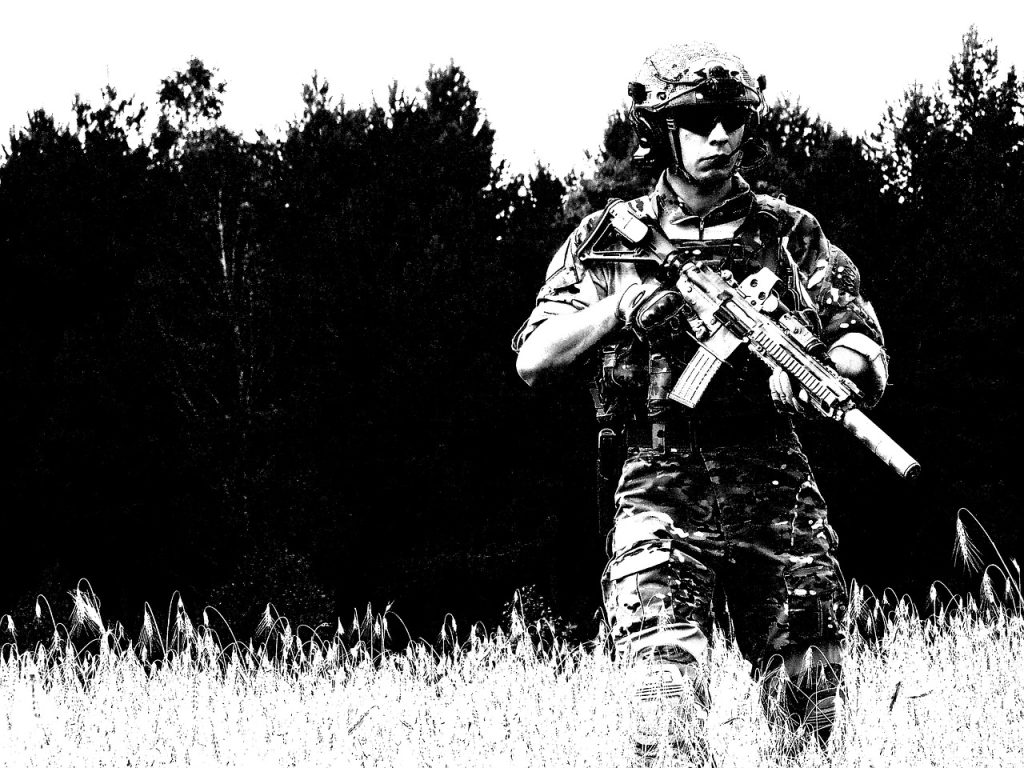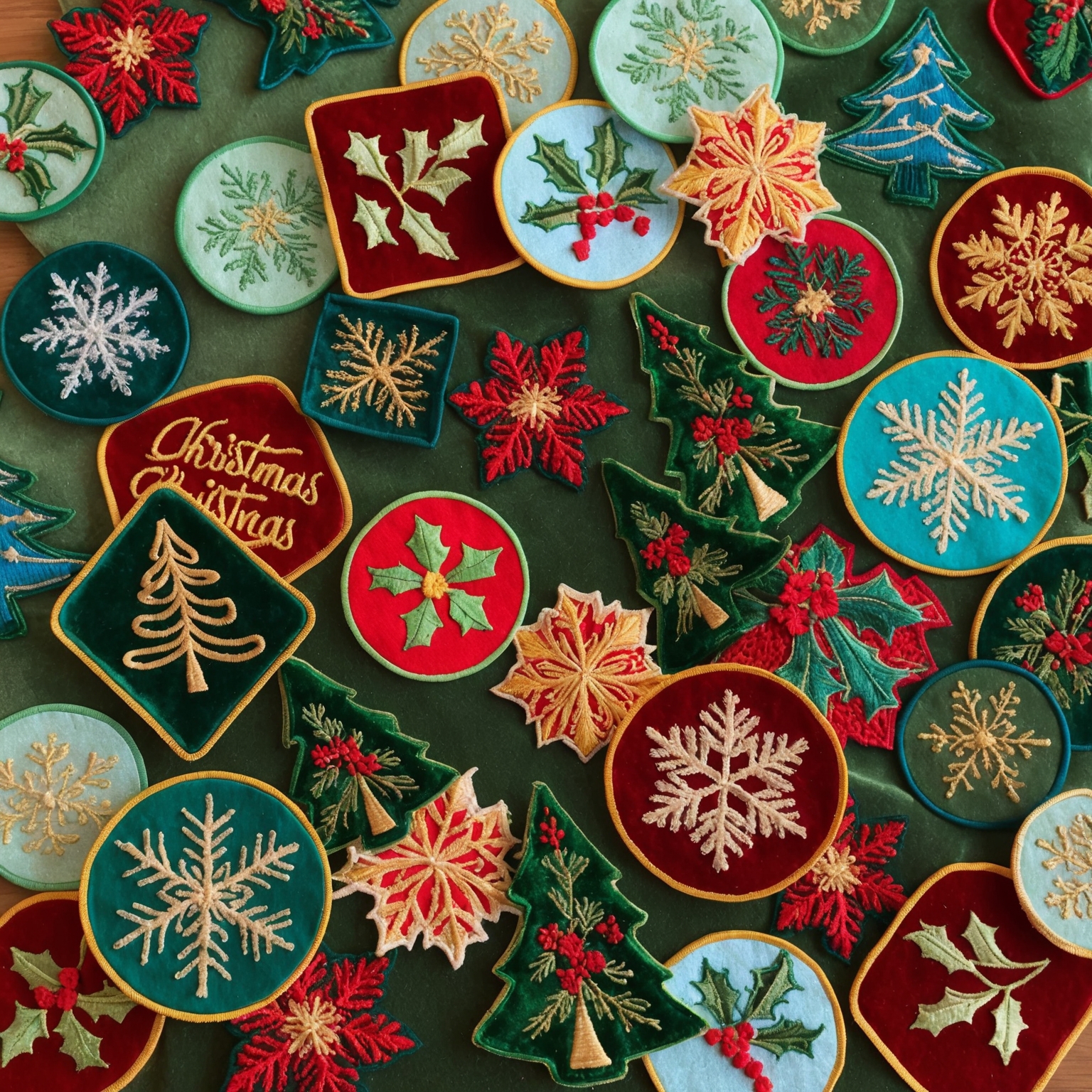Imagine a battlefield where soldiers distinguish friend from foe not by uniforms alone, but by intricate patches sewn onto their sleeves. These patches are not just pieces of fabric; they are symbols of bravery, heritage, and identity. They tell stories of battles fought, victories won, and sacrifices made. But how did these small yet significant emblems come to hold such powerful meaning? Welcome to the fascinating evolution of military patches, a journey that honors service and celebrates history.
Military custom patches have a storied history, evolving from simple identifiers to complex symbols of honor and tradition. These patches serve as a visual representation of a soldier’s journey, unit, and achievements. Yet, understanding their evolution requires delving into the past, exploring the changes in military culture, technology, and design that shaped these emblems. This article will trace the history of military patches, addressing common questions and misconceptions while highlighting their enduring significance.
The Beginnings: Simple Identifiers to Unit Symbols
Early Origins:
The concept of identifying soldiers by their attire dates back to ancient times. Armies in Ancient Rome, for instance, used different colors and symbols on their shields and tunics to distinguish between units. However, the use of embroidered patches as we know them began during World War I. Soldiers needed a quick and reliable way to identify their comrades amidst the chaos of trench warfare. Simple cloth patches, often bearing the unit’s insignia, were sewn onto uniforms to fulfill this need.
World War I: The Birth of Modern Military Patches:
During World War I, the U.S. military formally introduced shoulder sleeve insignia (SSI). The 81st Infantry Division, also known as the “Wildcat Division,” is credited with being the first unit to wear an authorized shoulder patch. Their patch, featuring a wildcat on an olive drab background, set a precedent for other units. These patches were practical, helping soldiers quickly identify friend from foe, but they also began to carry deeper meanings of pride and unit cohesion.
World War II: Standardization and Proliferation
A Surge in Popularity:
World War II saw an explosion in the use and variety of military patches. The U.S. Army standardized patches for its divisions, corps, and armies. Each patch told a story, often incorporating elements reflecting the unit’s heritage, mission, and achievements. For instance, the 101st Airborne Division’s “Screaming Eagle” patch became iconic, symbolizing the division’s airborne capabilities and fierce spirit.
Design and Symbolism:
The designs of these patches became more intricate and meaningful. Colors, symbols, and shapes were carefully chosen to represent different aspects of the unit. The use of embroidery technology advanced, allowing for more detailed and durable patches. Soldiers wore these patches with pride, and they became a source of morale and camaraderie.
The Korean and Vietnam Wars: Personalization and Expression
Personalized Patches:
The Korean and Vietnam Wars brought a shift towards more personalized patches. Units often created unofficial patches to commemorate specific operations or to express unit identity in a more informal manner. These patches could be humorous, defiant, or commemorative, reflecting the unique experiences of soldiers in these conflicts.
Subdued Patches:
In the Vietnam War, the U.S. military introduced subdued patches for combat uniforms. These patches used muted colors like black, green, and brown to reduce visibility and enhance camouflage. While less vibrant, these patches still carried significant meaning and helped maintain unit identity in challenging environments.
Modern Era: Advanced Technology and Customization
Technological Advancements:
The modern era has seen significant advancements in patch manufacturing technology. High-quality embroidery, PVC, and woven patches offer durability and intricate detail. Customization has become more accessible, allowing units to design patches that reflect their unique identity and mission.
Digital Integration:
In recent years, there has been a growing trend towards integrating digital technology with traditional patches. Some patches now include QR codes or RFID chips that link to digital content, such as unit histories, videos, or interactive experiences. This blend of tradition and technology enhances the storytelling aspect of military patches.
Addressing Common Objections
Are Patches Still Relevant?
Some may question the relevance of military patches in today’s high-tech military environment. However, patches remain a powerful symbol of identity and pride. They foster a sense of belonging and continuity, linking modern soldiers to their historical predecessors. The personal and emotional connection to a patch is something technology cannot replace.
The Cost and Practicality of Patches:
Another common concern is the cost and practicality of producing and maintaining patches. While high-quality patches do require investment, their benefits in terms of morale and unit cohesion far outweigh the costs. Additionally, modern manufacturing techniques have made producing patches more cost-effective and accessible.
The Future of Military Patches
As we explore the rich history of military patches, it’s intriguing to consider their future. How will advancements in technology further enhance their role in the military? Will digital patches become the norm, or will traditional embroidered patches continue to hold their ground? These open questions invite us to look forward to the next chapter in the evolution of military patches.
Honoring Service Through Design
Elements of Patch Design:
Creating a meaningful military patch involves careful consideration of various elements. Symbols, colors, and text must be chosen to accurately reflect the unit’s identity and values. For instance:
- Symbols and Icons: Animals, weapons, and historical figures often feature prominently, symbolizing traits like courage, strength, and honor.
- Colors: Different colors convey different messages. Red can symbolize valor, while blue might represent loyalty and trust.
- Text: Mottos, unit names, and significant dates add context and meaning, turning a simple patch into a narrative piece.
Real-Life Examples: Iconic Military Patches
Military patches serve as powerful symbols that represent the history, achievements, and spirit of the units they belong to. Here are some of the most iconic military patches and the stories behind them:
1. The Screaming Eagles: 101st Airborne Division
The 101st Airborne Division, known as the “Screaming Eagles,” is one of the most renowned divisions in the U.S. Army. Their patch features the head of a bald eagle, a symbol of American strength and freedom. This patch is instantly recognizable and represents the division’s airborne capabilities and elite status.
History and Significance:
- World War II: The 101st Airborne Division played a crucial role in major operations such as D-Day and the Battle of the Bulge. The Screaming Eagle patch became a symbol of their bravery and tactical expertise.
- Vietnam War: The division continued to serve with distinction, further cementing the legacy of the Screaming Eagle patch.
2. The Big Red One: 1st Infantry Division
The 1st Infantry Division’s patch, commonly referred to as the “Big Red One,” features a simple but bold red numeral “1” on a green background. This patch is one of the oldest and most famous in the U.S. Army.
History and Significance:
- World War I: The 1st Infantry Division was the first American division to arrive in France and engage in combat.
- World War II: The division participated in significant battles, including the invasion of Normandy.
- Present Day: The Big Red One continues to symbolize the division’s long history of bravery and service.
3. The Seabees: U.S. Navy Construction Battalions
The U.S. Navy Seabees’ patch features a bee holding a wrench and a machine gun, symbolizing their dual role in construction and combat. The Seabees’ motto, “We Build, We Fight,” is perfectly encapsulated in this patch.
History and Significance:
- World War II: The Seabees were established to meet the need for skilled construction workers who could also defend themselves. They built bases, airstrips, and other critical infrastructure in combat zones.
- Ongoing Legacy: The Seabees continue to serve in various capacities, maintaining their reputation for versatility and bravery.
4. The First Cavalry Division: U.S. Army
The First Cavalry Division’s patch is a distinctive yellow shield with a diagonal black stripe and a black horse’s head silhouette. This patch is associated with one of the most versatile and storied divisions in the U.S. Army.
History and Significance:
- World War II and Korean War: The First Cavalry Division served with distinction in both conflicts.
- Vietnam War: The division was among the first to use air mobility extensively, revolutionizing modern combat tactics.
5. The Green Berets: U.S. Army Special Forces
The U.S. Army Special Forces, known as the Green Berets, have a patch featuring a dagger and three lightning bolts, symbolizing their ability to conduct unconventional warfare.
History and Significance:
- Vietnam War: The Green Berets played a significant role in counterinsurgency and guerrilla warfare operations.
- Modern Era: They continue to be a crucial component of the U.S. military’s special operations capabilities.
Celebrating Tradition and Innovation
Military patches have evolved significantly over the past century, but their core purpose remains the same: to honor service, foster identity, and celebrate achievements. These small emblems carry powerful stories of bravery, camaraderie, and tradition. As we look to the future, the evolution of military patches will undoubtedly continue, blending innovation with tradition to honor those who serve.
Whether you’re a history enthusiast, a military member, or someone interested in design, understanding the evolution of military patches offers a unique glimpse into the past and a fascinating look at how we honor service today.
If you are interested in purchasing high-quality custom patches, feel free to call us at 866-903-4875 or fill out one of our FREE quotes here.





